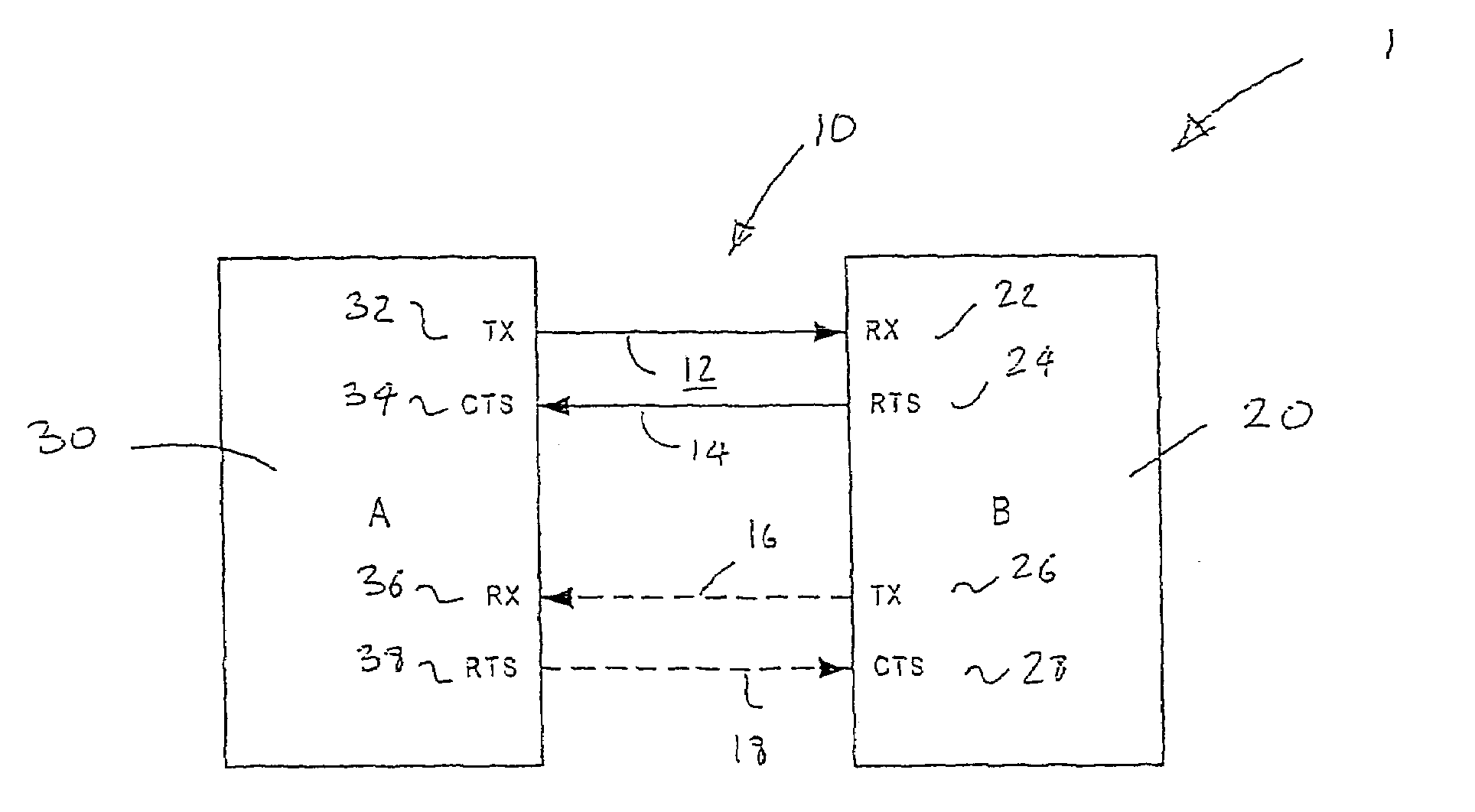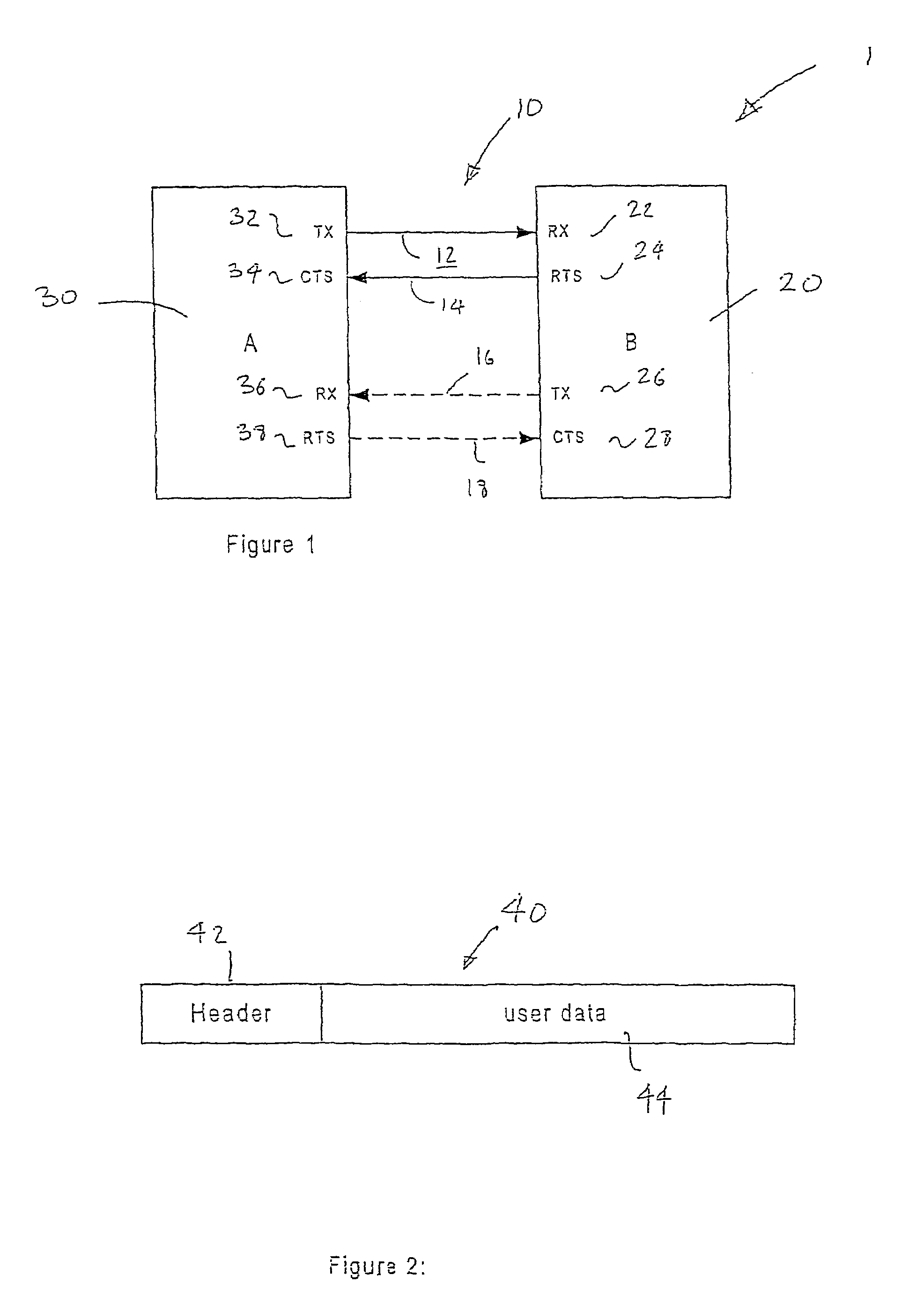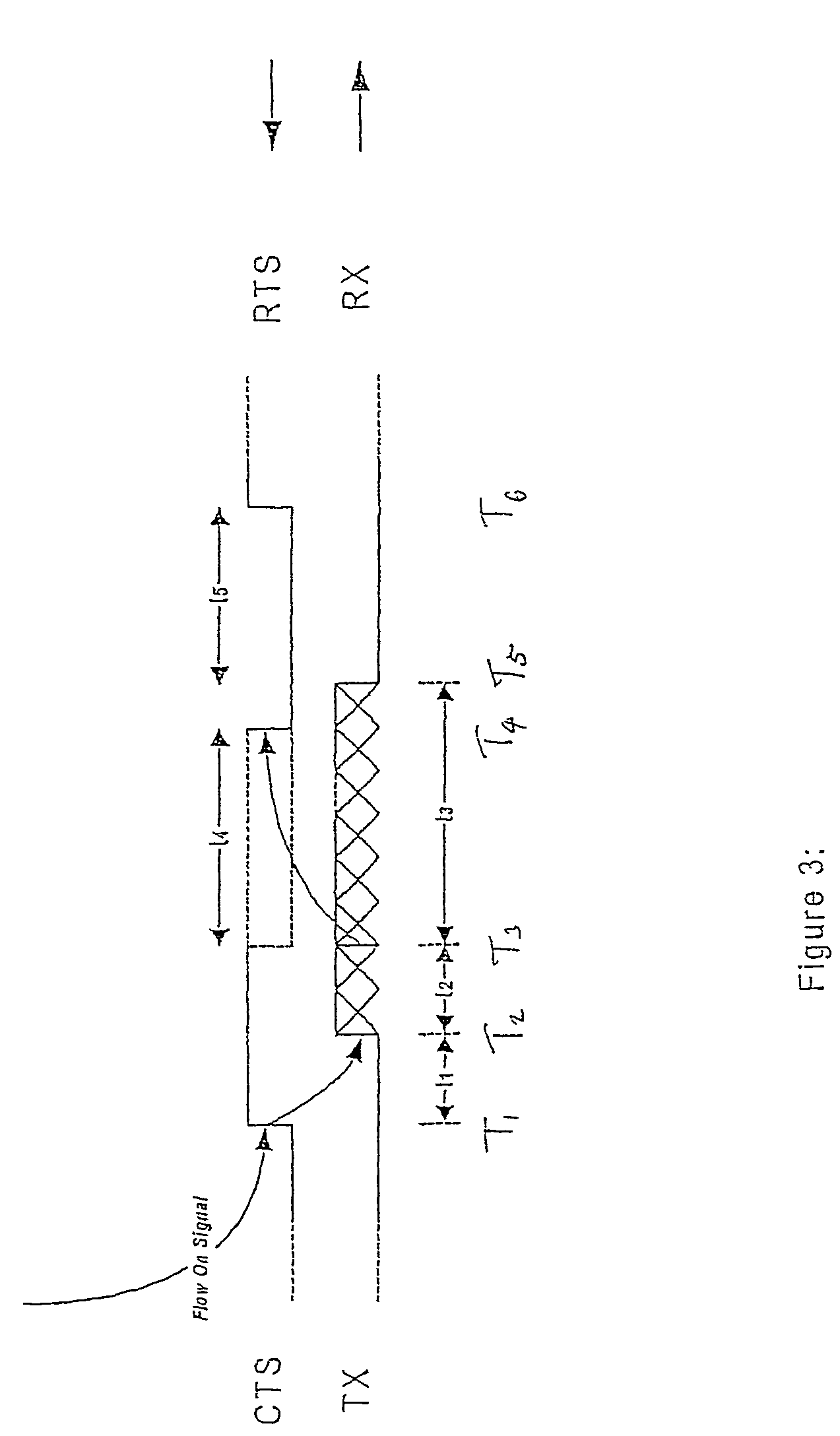Asynchronous serial data interface
- Summary
- Abstract
- Description
- Claims
- Application Information
AI Technical Summary
Benefits of technology
Problems solved by technology
Method used
Image
Examples
embodiment
PREFERRED EMBODIMENT
[0055]The flow control between transmitter and receiver is handled packet wise. The detection of the rising edge of RTS / CTS allows the transmission of only one packet. The receiver de-asserts the RTS / CTS inactive once the packet header has been received. The transmitter is not allowed to transmit the next packet until detection of another rising edge of the RTS / CTS signal. The flow control handling is illustrated in FIG. 3. When the RTS / CTS goes inactive the transmitter completes transmission of the current packet. When RTS / CTS goes from inactive to active this signals the transmission of the next single packet.
[0056]Referring to FIG. 3, RTS / CTS goes active at time T1. There is a latency t1 for detection of the rising edge at the transmitter. The transmitter detects the rising edge at T2. The transmitter takes t2 to transmit the packet header and starts transmitting the rest of the packet at T3 which takes t3. The transmitter finishes transmitting the packet at T...
embodiment 2
[0078]When the RTS / CTS goes low the transmitter completes transmission of the current packet. When RTS / CTS goes from inactive to active this signals the transmission of the next packet.
[0079]The receiver monitors the remaining memory and an alert is created when the remaining memory falls below some threshold and is reset when the available memory rises above the threshold. The receiver puts RTS / CTS inactive only when there is an alert AND after a packet header has been received. That is, instead of changing RTS / CTS from active to inactive after every packet header is received as in the preferred embodiment, the transition only occurs when there is a risk of overflow. The transmitter would continuously send packet after packet while RTS / CTS remains active, and restarts continuously sending packet after packet when CTS / RTS goes inactive-active (i.e. inactive-active transition says ‘restart data stream’ as opposed to ‘send one packet’).
[0080]The receiver does the following:[0081]1. de...
PUM
 Login to View More
Login to View More Abstract
Description
Claims
Application Information
 Login to View More
Login to View More - R&D
- Intellectual Property
- Life Sciences
- Materials
- Tech Scout
- Unparalleled Data Quality
- Higher Quality Content
- 60% Fewer Hallucinations
Browse by: Latest US Patents, China's latest patents, Technical Efficacy Thesaurus, Application Domain, Technology Topic, Popular Technical Reports.
© 2025 PatSnap. All rights reserved.Legal|Privacy policy|Modern Slavery Act Transparency Statement|Sitemap|About US| Contact US: help@patsnap.com



